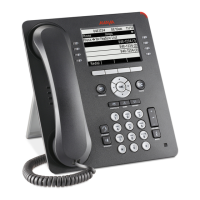Table 1: The impact of additional devices on power requirements over Ethernet Power Class
Phone
Model
Default
PoE
(Class “L”
on IEEE
switch)
One BM12
(IEEE
switch
setting)
Two BM12s
(IEEE
switch
setting)
Three
BM12s
(IEEE
switch
setting)
One
SBM24
(IEEE
switch
setting)
Two
SBM24s
(IEEE
switch
setting)
Three
SBM24s
(IEEE
switch
setting)
9608 Class 1 L H H L H H
9608G Class 1 H H H H H H
9611G Class 1 H H H H H H
9621G Class 2 Not applicable; the 9621G does not support button modules or USB devices.
9641G/
9641GS
Class 2
H H H H H H
Note:
The deskphone monitors power consumption to conform to the IEEE 802.3af specifications. If you
connect a Dual Headset Adapter (DHA), the power classification might change and you must then
change the switch setting as well.
Note:
In 9611G, 9641G, and 9641GS, the USB interface supports USB login, use of digital pictures
from a USB device as a screensaver, and import or export of contact lists by a Flash drive.
The 9608 does not support USB devices, and the 9621G model does not have a USB jack.
Since the power consumption of the drive varies from product to product, you cannot state
how a USB will impact PoE power class. When the drive attempts to register with the
deskphone, the deskphone determines if its current power class setting is adequate to support
the drive. If power is adequate, the deskphone lets the drive register. If the power is not
adequate, the deskphone will alert the user to change the power class by changing the IEEE
power switch setting from L to H. In extreme situations, the total power consumption with the
addition of a USB device may be greater than what the Class 3 power source can provide. In
that case, the deskphone detects this and instructs the user to use an auxiliary power supply
or to temporarily disconnect one or more of the modules while the USB device is in use. The
system parameter USBPOWER determines for which power class or classes to enable power
to the USB interface. For more information, see Administering 9608/9608G/9611G/9621G/
9641G/9641GS IP Deskphones H.323.
Important:
The last step in assembling the 9600 Series IP Deskphone is to plug in the deskphone with
any modules or adapters or both but without attachments such as USB devices and headsets.
Plug in the deskphone to a power source either by plugging the power cord into the power
source (local power) or plug the modular line cord into the Ethernet wall jack (IEEE power).
Caution:
Failure to connect the proper cables with the proper jacks might result in an outage in part of
your network.
To learn how to connect cords to the jacks on the deskphones:
Installing the Deskphone
March 2018 Installing and Maintaining Avaya 9608/9608G/9611G/9621G/9641G/9641GS IP
Deskphones H.323 19
Comments on this document? infodev@avaya.com

